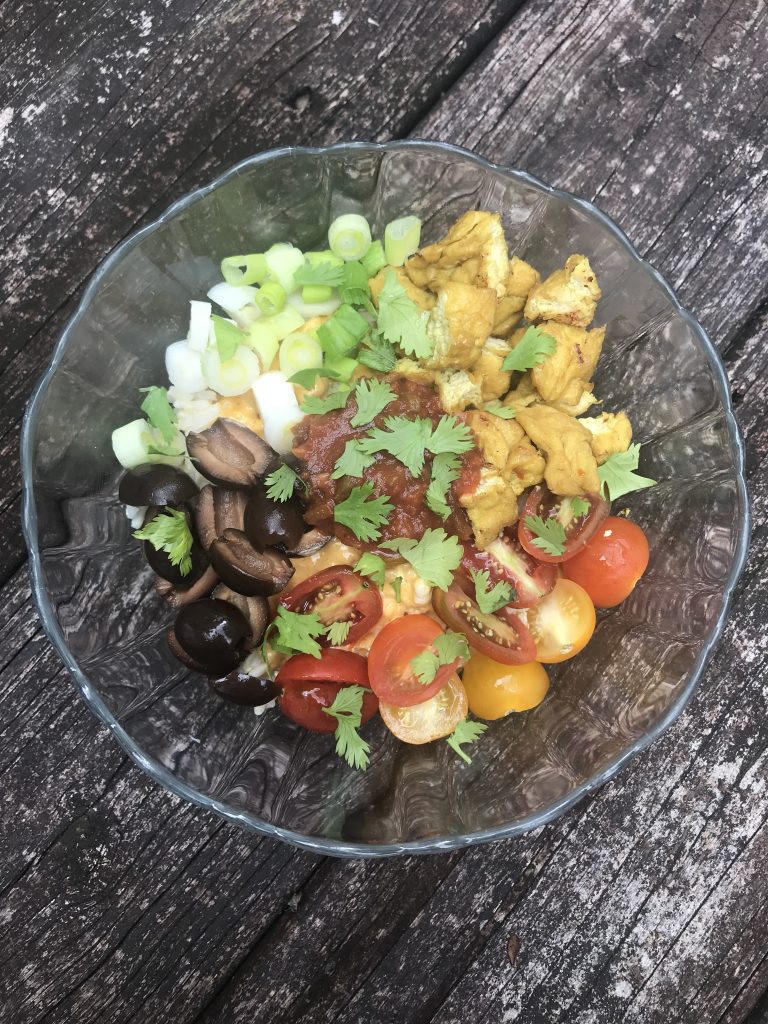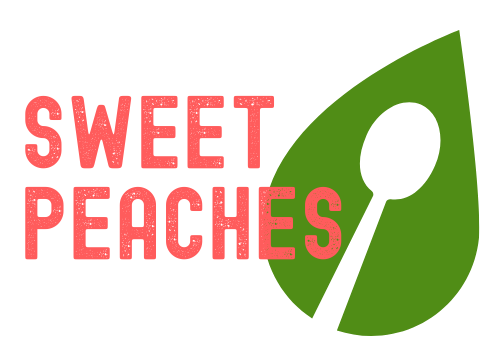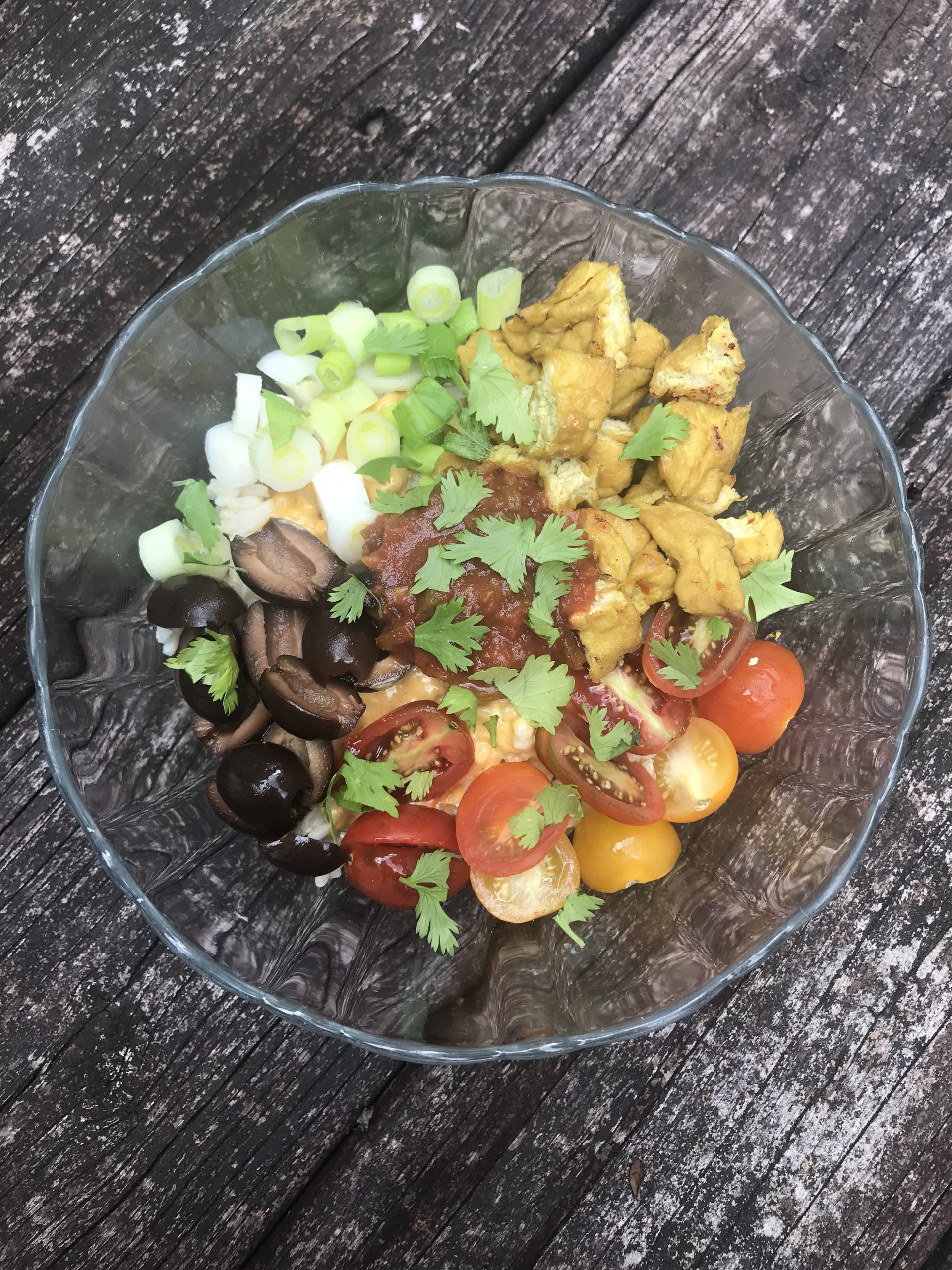I love a good grain bowl meal because they are so versatile and delicious. Check out this post all about how to build a nutrient dense meal!

What is a Grain Bowl?
I’ve seen people refer to this type of meal as a nourish bowl, power bowl, or any other adjective you could use to describe a bowl. To be honest, there is no rules when it comes to these bowl meals which is why they are so great and versatile. This is my favorite go to lunch option, so I thought we’d break down the best way to make a nutritionally well-rounded meal with all your favorite flavors. You’ll find a lot of different grain bowl recipes on my blog like these quinoa salads.
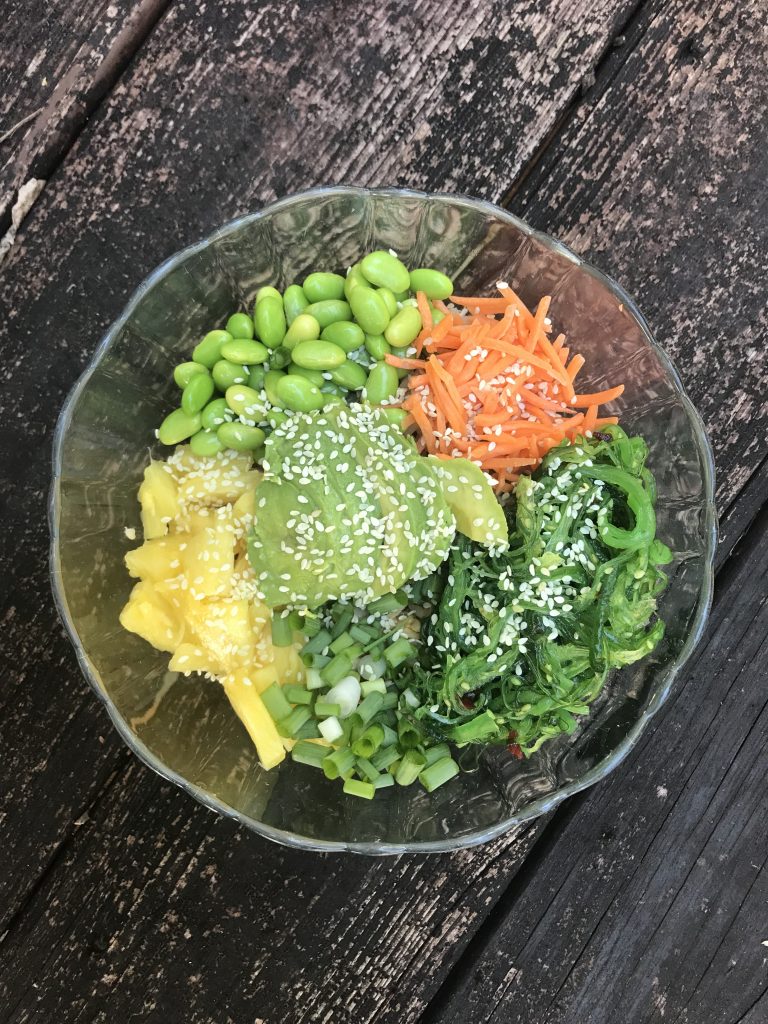
The Fullness Trio
There are so many ways that people make a “heathy” meal. You can count calories or macros. You can use the plate method or eating the rainbow. I support people doing whatever works best for them. If you find yourself obsessing over this, I’d recommend trying to include fat, fiber, and protein. Making sure your meal has these 3 components is a great way to make a nutritious meal without too many restrictions or rules to remember.
Fat, Fiber, Protein
Fat, fiber, and protein are great because they all help you feel full longer. Fat is one of the three macronutrients that is divided into saturated and unsaturated fat. Often fat gets a bad wrap, but eating fat does not equate to being fat. Focusing on mono- and poly-unsaturated fats provides satiety after meals because fat triggers hormones to inhibit hunger signals.
Fiber is part of the plant-based foods we eat that cannot be digested. Fiber moves through our digestive system relatively unchanged and is excreted. Even though we can’t digest fiber, it adds bulk to our foods and helps us feel full longer because the stomach has stretch receptors to signal we’re full.
Protein is another macronutrient that helps you feel full over a longer period of time that carbohydrates. Protein affects hormones that turn off hunger signals.

Components of a Grain Bowl
Whole Grain
The base of any good grain bowl is your favorite whole grain! I love to use brown rice, millet, quinoa to name a few. Using whole grains is a great way to get some fiber into your meals. Honestly, some diced potatoes make a really good base too even though they are not a grain. They make a great starchy base full of nutrients like potassium!
Protein
We’ve talked about how protein can help you fell full longer. It’s also the macronutrient that people tend to increase because people tend to decrease fat and carbs. All macronutrients are important, but people tend to be a little too obsessed with protein. Some of my favorites to include are beans, tofu, tempeh, edamame, and meat alternatives like soy chorizo.
Veggies
Veggies are a great way to get color, flavor, and more fiber into your bowl. If I want to use up things that I have in my fridge then I’ll throw in whatever I have. I will also think about the flavor combo I want to make and what vegetables will pair well with the protein and sauce I want to use.
Sauce
Pick your favorite sauce or dressing to add flavor and bring your whole bowl together. Some of my go-to sauces are salsa, chipotle mayo, nutritional yeast dressing, or romesco sauce.
Crunch
To keep things interesting, I like to add different textures to many grain bowls. Some ways to add crunch is to add chopped nuts, hemp seeds, lettuce, or cucumbers for example. Obviously, this one may overlap with the veggie and fat category, but it’s something to consider.
Fat
To complete the fullness trio, add some fat to your bowl. A lot of these categories overlap, so your dressing may contain fat or if you add nuts and seeds for crunch, then you get some good fats into your bowl too. Some of my other favorite ways to add fat is to add guacamole or sliced avocado, sour cream, or yogurt.
Fresh Flavor
The best way to finish off your grain bowl is to top it with something fresh like herbs or fresh veggies. If you like cilantro, it’s my favorite way to add fresh flavor to many types of flavor combos. Other herbs like basil, chives, or even green onions make a great final addition to your grain bowl.
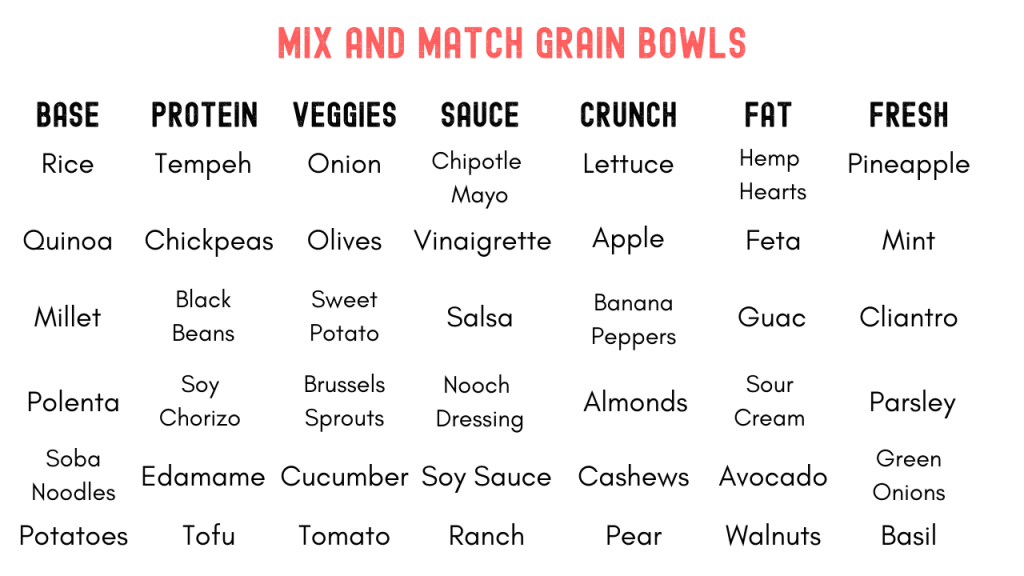
I love a good infographic, so I put together some of my favorites for each category. You can read the rows across or pick one of each to include in your bowl. I usually use several veggies to make my bowl colorful and tasty. Plus, this is just a rough guide to give you ideas since many of the crunchy things also could be fat or veggies. And some of the fats could also be sauces. Play around with different combos and let me know your favorite grain bowl variation in the comments below!
